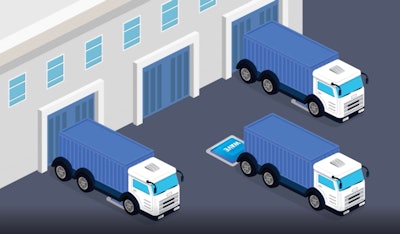It can be challenging enough for truck drivers making their way around busy lots, loading docks and port terminals. Throw in a bunch of charging stations, high voltage cables and people coming and going to plug in electric trucks and it stands to get even more complicated.
That’s where wireless charging advocates say charging pads installed flush at ground level can solve those problems and more. But that convenience comes with a higher upfront cost, including additional vehicle components needed for the transition to wireless charging.
Already in operation for electric buses, wireless (or inductive) charging is slowly making its way to Class 8 electric tractors where one of the top inductive charging proponents says the technology will cost less in the long run versus plugging in.
“Wireless charging is cheaper and safer to operate and is proven to work consistently in all types of weather conditions,” said Robin Mackie, president at Ideanomics, parent company of Wireless Advanced Vehicle Electrification (WAVE).
 More funding could lead to more wireless charging. WAVE
More funding could lead to more wireless charging. WAVE
WAVE has been using wireless charging since 2017 for electric buses and sees its technology as a great fit for Class 8. To help keep fleet costs in check, Ideanomics rolled out an ‘As-a-Service’ model.










